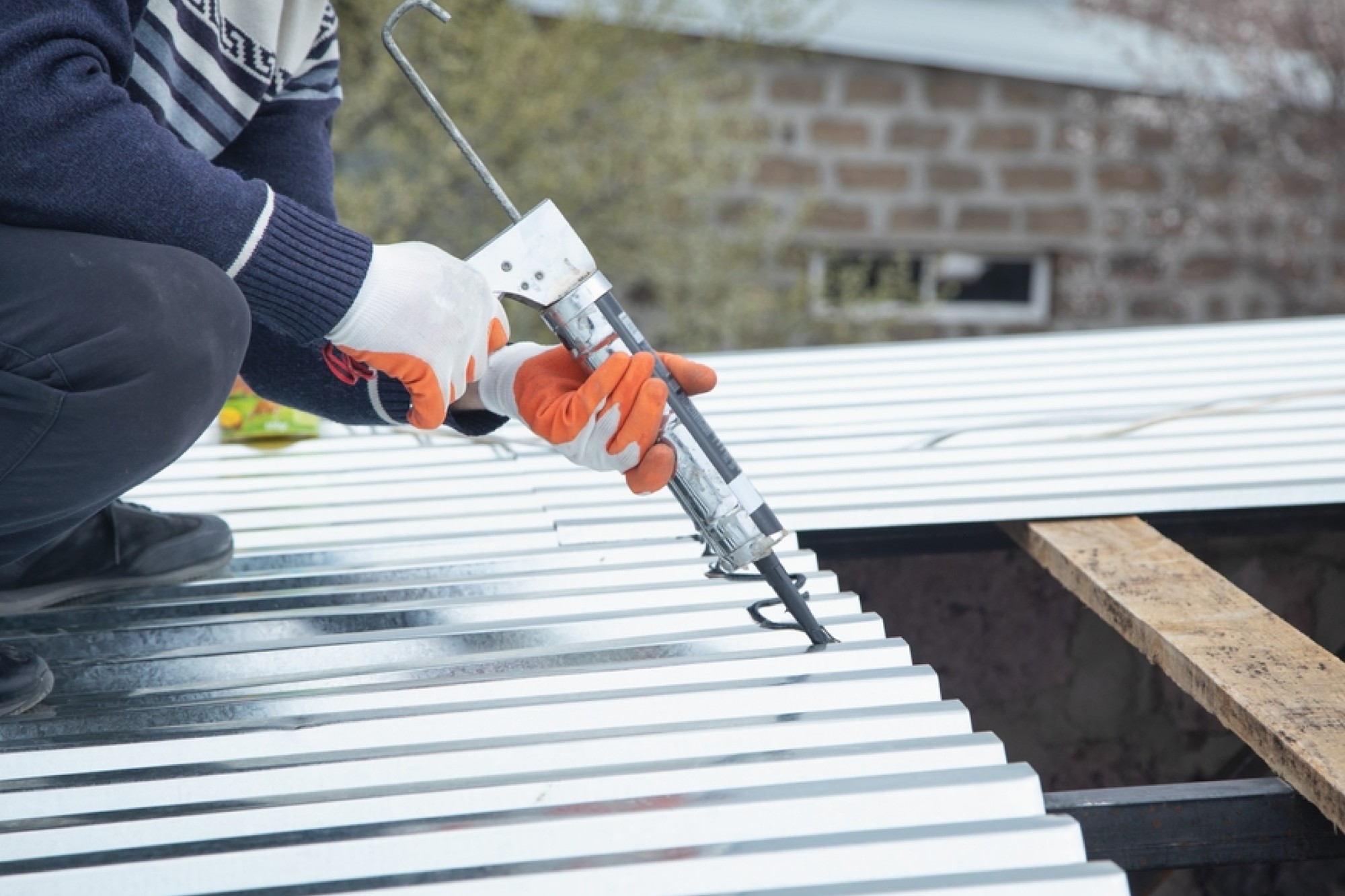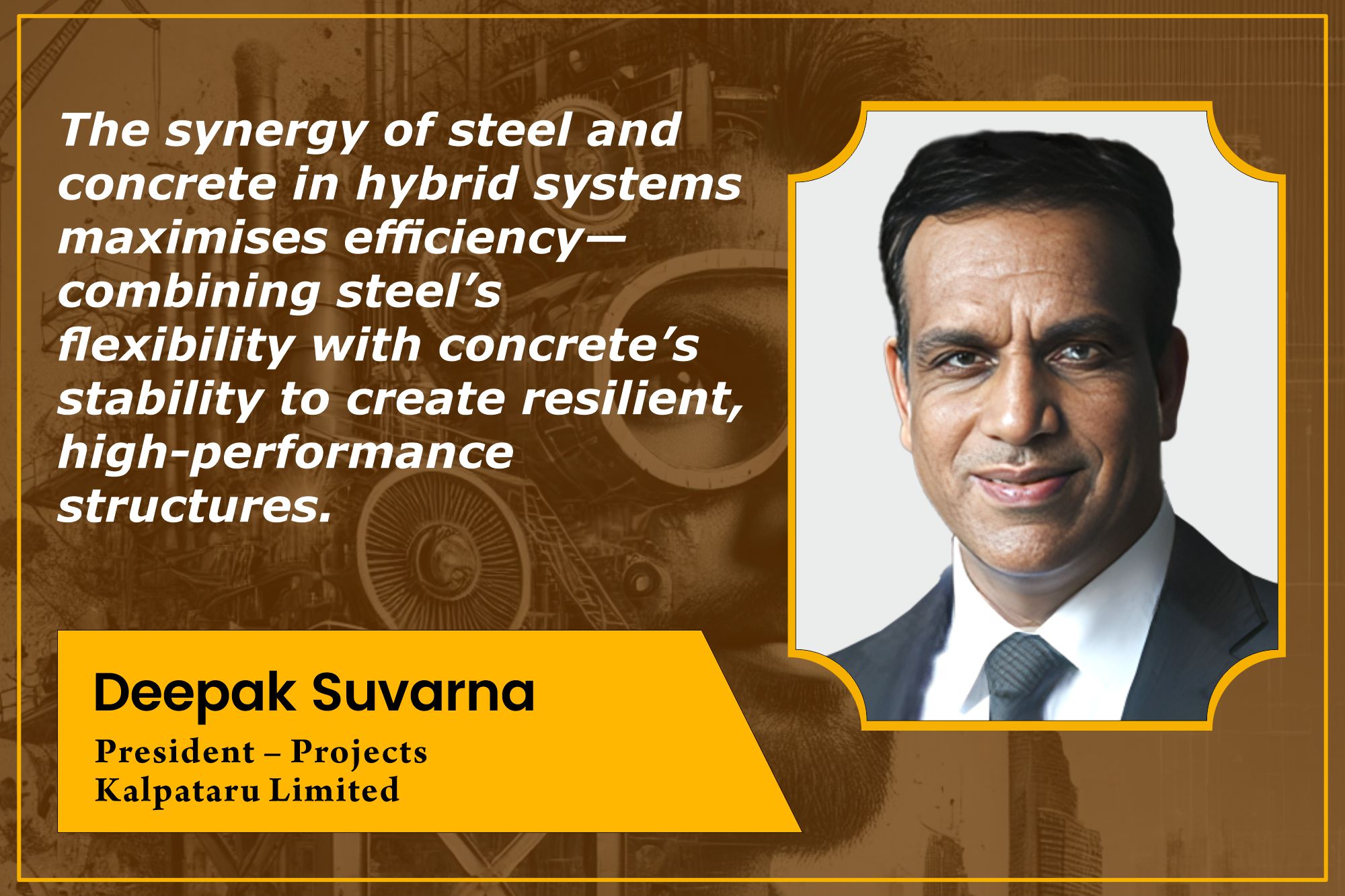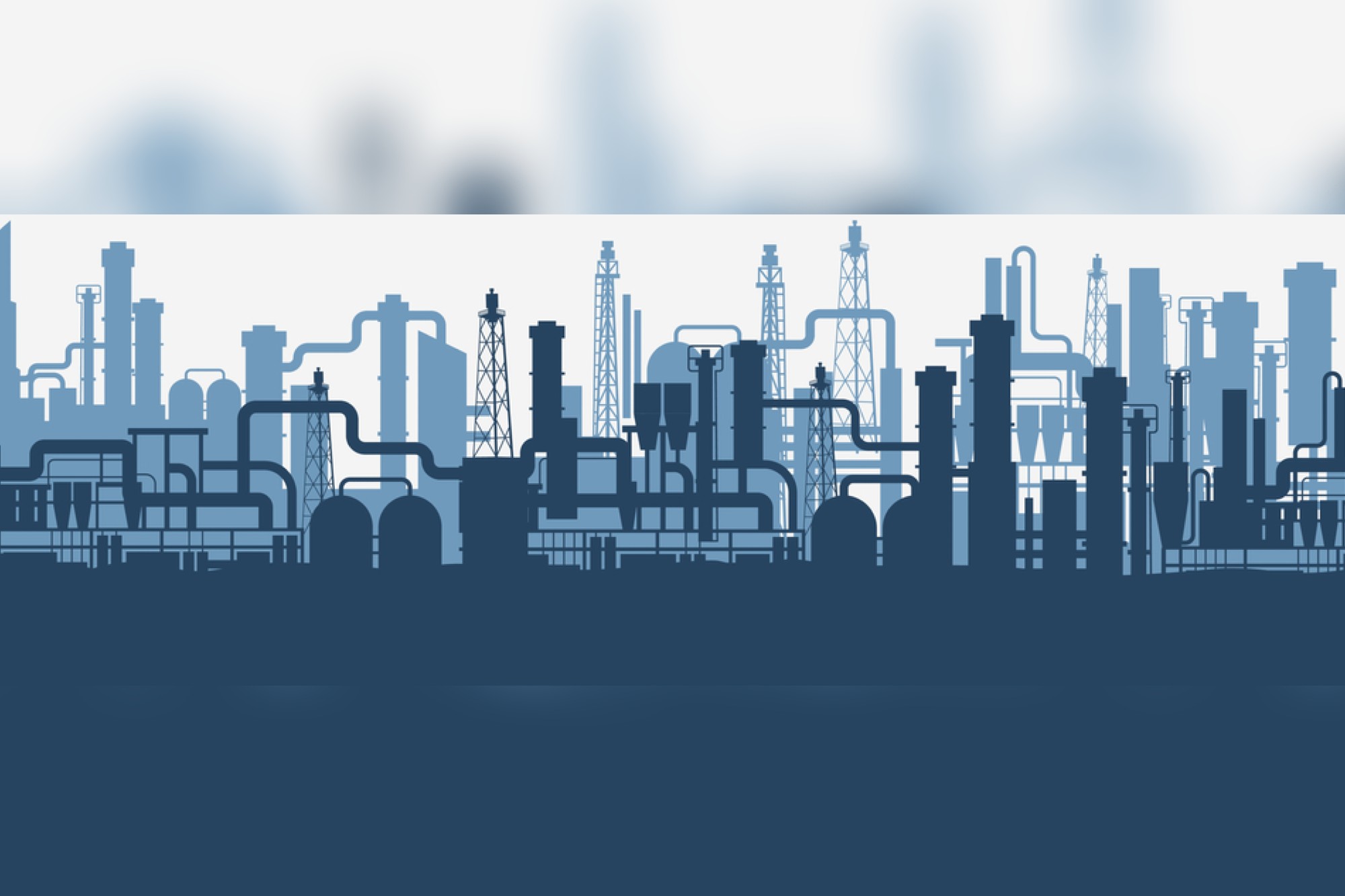CC-KLI : LEADING CONSTRUCTION CHEMICALS SUMMIT POWERED BY ASIAN PAINTS
By Staff Report | December 18, 2024 3:04 pm SHARE

Asian Paints is setting new standards in the construction industry through its Construction Chemical Knowledge Leadership Initiative. Designed to promote knowledge sharing and innovation, this platform brings together industry experts to address sustainability and advancements in construction chemicals.
Asian Paints, a name synonymous with innovation in the Indian home décor industry and has expanded its horizons beyond household paints into various product categories. With over 82 years of history, the company has evolved from a household brand to a global player in the construction chemicals space, offering cutting-edge solutions that span across multiple verticals, including waterproofing, admixtures, industrial coatings, and repair solutions.
The evolution of Asian Paints in the construction sector:
Over the last 13 years, Asian Paints has made significant strides in the construction chemical business, building a legacy based on trust and innovation. The company has progressively expanded into diverse sectors, such as automotive coatings, leak-proof solutions, and other specialized offerings. Today, Asian Paints provides a range of protective coatings, home improvement products, including bathroom fittings, kitchen solutions and furniture.
A key component of the company’s success in protective coatings has been its long-standing partnership with PPG Industries, a global leader in coating systems. This collaboration, which has spanned over 35 years, has allowed Asian Paints to leverage PPG’s expertise in providing advanced solutions for industries that require high-performance coatings.
Asian Paints’ key vertical segments in construction chemicals:
Asian Paints has established a strong presence in the construction chemicals market through a robust portfolio of more than 330 products under four main verticals. The first vertical, Waterproofing, includes both pure waterproofing and hybrid systems that are designed to safeguard infrastructure from water damage. This comprehensive approach ensures the protection and longevity of various structures exposed to harsh environmental conditions.
The second vertical, Admixtures, plays a crucial role in strengthening and enhancing the durability of concrete, making it a core component in the creation of long-lasting and resilient buildings.

The third vertical focuses on Industrial Floor Coatings, offering high-performance solutions such as Epoxy, Polyurethane, ESD and Car Deck Coatings. These coatings are specifically tailored for industrial environments, providing durability and protection in demanding settings.
The fourth vertical, Repair and Rehabilitation, provides advanced solutions for retrofitting, repairing, and strengthening buildings, emphasizing the need for sustainable maintenance practices in modern infrastructure. These verticals address the increasing demand for effective and long-term repair solutions to extend the lifespan of existing structures.
These four pillars form the foundation of Asian Paints’ construction chemical business, which has been honed over the last decade to meet the evolving needs of contractors, consultants, and applicators in the construction sector.
The Construction Chemical Knowledge Leadership Initiative:
Asian Paints has been hosting the Construction Chemical Knowledge Leadership Initiative (CC-KLI) for over seven years, and it has become an invaluable platform for sharing knowledge and fostering discussions on industry innovations. The agenda of this summit is to bring to together Industry Experts, Academicians, Elites from Civil Construction Companies (CCCs), Project Management Companies (PMCs), Government Bodies and Structural Architects & Consultants to explore the latest advancements in smart construction technology and address challenges in modern day construction.
The summit has already been conducted in nine cities: Chennai, Bangalore, Hyderabad, Mumbai, Kolkata, Ahmedabad, Pune, Delhi and Goa. The 10th edition of CC- KLI this year was conducted in Indore.
Each city hosts unique discussions tailored to the specific needs of the region. For example, in Mumbai, the summit focused on the challenges of the bullet train project, while in Indore, the emphasis was on factory settings and industrial applications, such as protecting concrete and other infrastructure elements from wear and tear.
Hurdles in the adoption of modern construction practices:
One of the challenges in the construction industry today is the lack of knowledge among designers who are not fully adopting modern-day construction practices for concrete and metal structures. For instance, adoption of precast concrete, high-density concrete, and floor protection systems based on the operational needs of factories, is still not widespread.
There is a growing emphasis on the need for high-impact resistance and abrasion-resistant floor coatings, especially in heavy engineering industries. Asian Paints continues to prioritize client demands and coating knowledge, providing durability and long-term performance, which are critical in high-traffic, heavy-load applications such as factories and industrial settings.
Moreover, the panel emphasized the importance of smooth and frequent communication among all stakeholders involved in factory construction, from design to finishing stages. Clear communication helps in the efficient execution of projects and ensures that adherence to codal provisions of civil engineering is maintained throughout. The need to prioritize quality in every phase of construction, from design to execution, was also underlined as essential in modern-day construction practices.
Adopting smart technologies and BIM in construction:
With the integration of Building Information Modeling (BIM) and other cutting-edge technologies, factory construction is gradually shifting toward more advanced practices. Smart construction software allows organizations to review the design during the planning phase, ensuring that operations on the factory floor are optimized. This not only guarantees smooth operations but also ensures the health, welfare, and safety of workers.

By utilizing such technologies, risks to operations at all stages of construction can be minimized, if not completely eliminated, from all perspectives. Emerging technologies are also being deployed to improve the longevity and safety of metal structures. For instance, new developments in corrosion protection for metal structures, such as self-healing chemistry and materials researched through Electrochemical Impedance Spectroscopy (EIS) and Fourier Transform Infrared Spectroscopy (FTIR), are enhancing structural durability. Scanning Electron Microscopy (SEM) techniques are also being used to gain a deeper understanding of material properties and improve their performance in harsh environments.
Structural health assessment and retrofitting:
Another area where modern technologies are making a difference is in structural health assessment and retrofitting. Before embarking on rehabilitation projects, it is crucial to define the purpose of structural health assessment and strengthening of existing structures. Without this clarity, a focused approach to rehabilitation work cannot be adopted.
Proper diagnosis of structural health and rating, such as categorizing structures as “Very Good,” “Good,” “Fair,” “Bad,” or “Critical,” allows consultants to recommend appropriate actions. The frequency of maintenance and retrofitting may vary based on the results of the structural health assessment, ranging from a few years to quarterly checks.
Identifying the root causes of structural distress is vital before proceeding with any rehabilitation program. Eliminating these causes to the greatest extent possible will ensure the long-term integrity and safety of the structure.
Consultants must also evaluate the cost-effectiveness of strengthening works against the option of demolishing and rebuilding a structure. Decisions should always prioritize the safety and integrity of the building. Furthermore, for any rehabilitation efforts to be successful, they must be supported by an effective and well-maintained maintenance schedule to ensure the continued performance of the structure.
Sustainability and durability in construction:
Sustainability is an increasingly critical topic in the construction sector, and Asian Paints has been a champion of sustainable practices in both materials and processes. The company’s journey toward sustainability is reflected in its focus on low-carbon construction technologies and eco-friendly solutions that reduce waste and emissions throughout the construction lifecycle.
Zero carbon and zero waste construction:
For several years, there has been a growing emphasis on achieving zero carbon and zero waste in construction processes. This shift is particularly evident in the company’s exploration of alternative building materials and methods. One notable development is the growing use of pre-finished volumetric construction, which involves assembling pre-finished units to speed up the construction process while minimizing waste. This technology holds great promise for social housing projects, where cost-effective and sustainable solutions are essential.
Furthermore, Asian Paints and other industry players are increasingly adopting more sustainable practices, such as using composite cements (C3S) and ground granulated blast furnace slag (GGBS), which can significantly reduce the carbon footprint of construction without compromising the strength or durability of structures.
Environmental product declarations (EPDs) and their role in sustainability:
A critical tool in the move toward more sustainable construction is the use of Environmental Product Declarations (EPDs). These “passports” provide detailed information about the environmental impact of building materials throughout their lifecycle. EPDs are becoming increasingly popular in Europe and the U.S., and it is expected that they will gain traction in India soon.
In India, efforts are underway to build comprehensive databases that will help industry players make informed decisions about the environmental impact of the materials they use. These resources will enable contractors and consultants to make more sustainable choices and improve the environmental footprint of the construction process.
Energy efficiency and reducing carbon emissions in construction:
In sustainable construction, energy efficiency is another crucial component. Every stage of the building process has an effect on the environment, from the energy needed to make cement to the fuel used for vehicles. Energy consumption and emissions in the construction sector can be considerably decreased by implementing more efficient materials, such as low-carbon substitutes for Ordinary Portland Cement (OPC), and streamlining production procedures.
Likewise, embodied carbon in construction projects can be reduced by optimizing concrete production through better material selection and enhanced processes. Since concrete is the most used building material, there is a lot of room for sustainability advancements. The intention is to minimize waste and the requirement for new resources by making sure that things may be reused.
The future of sustainable construction:
Through programs like the Construction Chemical Knowledge Leadership Initiative and its partnerships with world leaders, Asian Paints keeps pushing the envelope and motivating the industry to reach new heights in environmental responsibility, durability, and adaptability.
As the sector develops, it is evident that creative thinking, sustainable methods, and a shared dedication to enhancing the built environment for coming generations will be the cornerstones of the construction industry’s future.

Cookie Consent
We use cookies to personalize your experience. By continuing to visit this website you agree to our Terms & Conditions, Privacy Policy and Cookie Policy.



































-20240213125207.png)

























